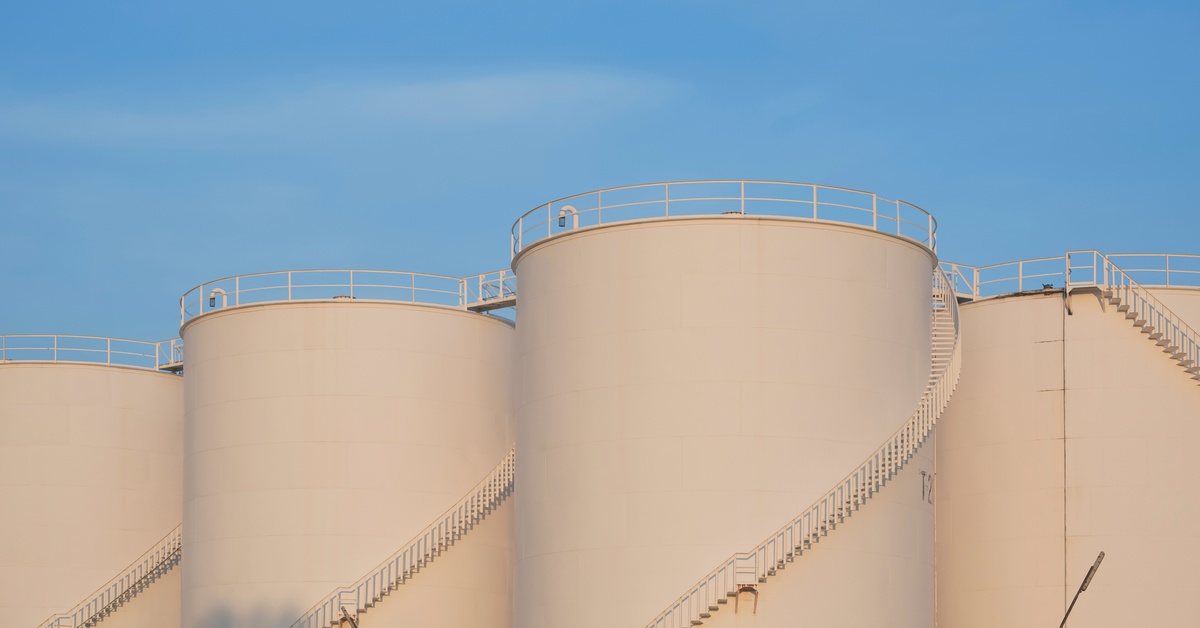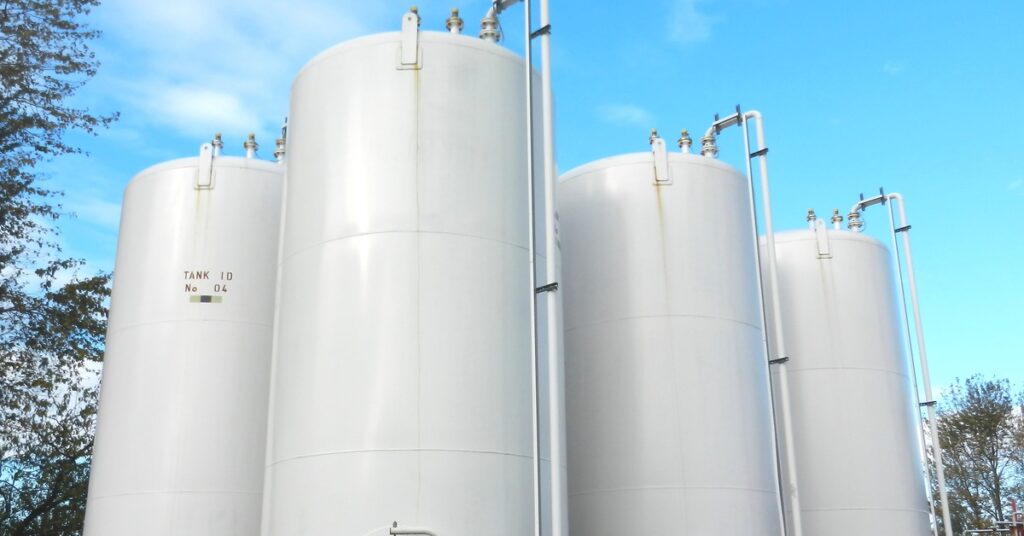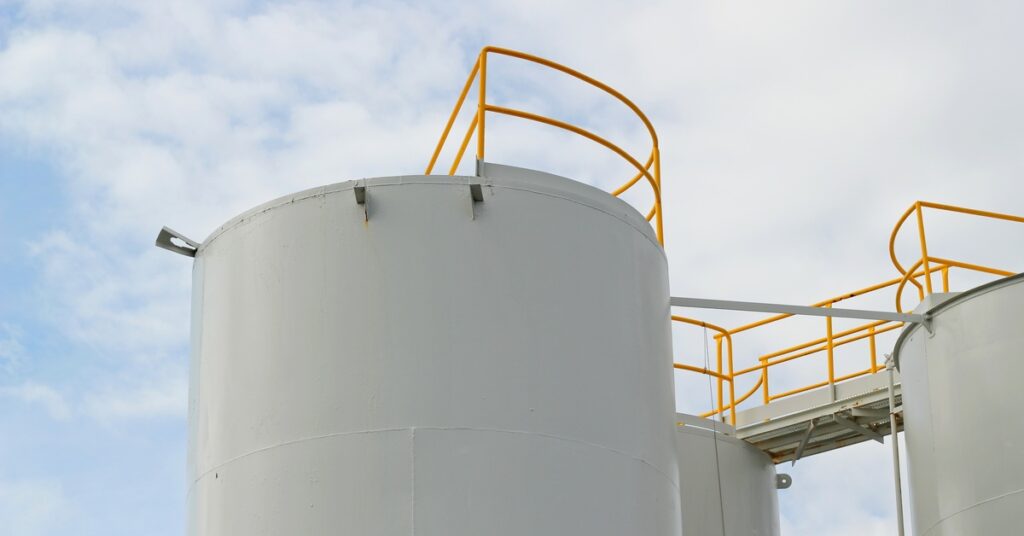
When choosing the proper tank lining, it's vital to weigh your options based on the specific needs of your industry and the materials you handle. PVC tank liner and vinyl ester tank linings are two popular choices, widely used for their durability and chemical resistance.
However, each material excels in different applications, and selecting the wrong one could lead to costly repairs or compromised performance. If you’re interested in finding out which tank lining is right for you, it’s important you understand all the differences there are between PVC and vinyl ester tank linings.
Durability
PVC linings have a robust construction and long lifespan, making them a highly reliable option for a broad range of industrial and commercial applications. Their strength ensures they perform well under normal wear and tear.
Vinyl ester linings, however, can be more durable in some settings, especially in demanding environments. Manufacturers design them to withstand exposure to harsh chemicals and extreme temperatures, making them an ideal choice for industries that require extreme chemical resistance.
Chemical Resistance
When it comes to environments with strong acids, alkalis, and solvents, vinyl ester coatings can be the superior choice. Their chemical resistance allows them to maintain performance and integrity in highly corrosive conditions. PVC linings also offer good resistance to many chemicals but may begin to degrade when exposed to highly aggressive or concentrated substances. Choosing between the two depends largely on the specific chemical exposure your tank will face.
Temperature Tolerance
Temperature tolerance is a critical factor in selecting a tank lining. Vinyl ester linings excel in high-temperature environments, offering excellent thermal stability even in extreme conditions. They can handle significant fluctuations without compromising their structural integrity. PVC linings, while suitable for moderate temperature ranges (<160 degrees F), may begin to soften or lose durability when exposed to excessive heat, making them less effective in applications involving extreme temperatures.

Flexibility
PVC linings have incredible flexibility, which allows them to adapt more easily to structural movements, vibrations, or shifts within the tank. This flexibility makes them particularly useful for applications where the tank material may expand, contract, or settle over time, like concrete. However, a vinyl ester coating is more rigid and less accommodating when it comes to movement.
Cost
For value-conscious projects, PVC linings are often the go-to choice, as they are more affordable upfront and require less specialized installation with less down time. Vinyl ester coatings, while more expensive initially, can provide value in the long term due to their superior performance and durability in challenging environments. Investing in vinyl ester coating may save money in maintenance and replacement costs over time, especially in industries dealing with the harshest of chemicals or extreme heat conditions.
Ease of Installation
PVC linings are relatively easy to install and repair, requiring less time, and labor. This straightforward installation makes them a practical choice for projects with tight deadlines. Vinyl ester coatings, while durable, demand more specialized handling during application. Their complex installation process will require more tank prep time and may require skilled technicians, which could increase both time and labor costs.
Longevity
Both PVC liners and vinyl ester coatings are durable, but the longevity of each depends heavily on the specific conditions they are exposed to. In less demanding environments, PVC linings can last for many years without maintenance. However, in harsh chemical or high-temperature conditions, some vinyl ester coatings tend to outlast PVC, offering an extended lifespan.
Abrasion Resistance
Applications involving abrasive materials, such as sand or other particulates, require linings with strong abrasion resistance. The right choice depends completely on the specific application. PVC tank liners can be manufactured in thickness in excess of 3/8” thick and are better suited for scenarios with heavy items, as they provide enhanced protection against wear and tear caused by abrasive substances. Vinyl ester coatings, while durable, are less effective at resisting heavily weights particles, due to cracking making them less ideal for such applications.
UV Resistance
For outdoor applications where exposure to sunlight is a concern, UV resistance is an important factor. Vinyl ester coatings can offer superior resistance to UV degradation, allowing them to maintain their performance and appearance over time. PVC linings, while still offering moderate UV protection, may degrade under prolonged UV exposure (years), making them better suited for indoor or shaded environments.
Compatibility With Tank Materials
PVC linings are highly versatile and compatible with a wide range of tank materials, including metals, concrete, and fiberglass. This adaptability makes them a popular choice across various industries. Vinyl ester coatings are similarly compatible but always require additional surface preparation or primers in some instances to ensure a secure bond with the tank material.
Maintenance
Maintenance is a key consideration when choosing a tank lining. PVC linings require almost zero maintenance due to their flexibility and straightforward repair processes. Small tears or damage are problems that you can often patch quickly, greatly reducing downtime. Vinyl ester coatings, while more durable, require more careful inspection and upkeep to detect and address potential cracks or damage that could compromise their performance.

Industry Usage
PVC linings are widely used in industries such as wastewater treatment, food processing, and general storage tanks, where moderate chemical resistance and flexibility are sufficient. Vinyl ester coatings, with their superior durability and resistance to aggressive substances, are more commonly found in chemical processing, petroleum storage, and other highly demanding industries where performance under extreme conditions is critical.
Environmental Considerations
Environmental impact is an increasingly important factor in material selection. While vinyl ester coatings offer exceptional performance in extreme conditions, their composition requires careful disposal methods to minimize environmental harm. PVC linings, when responsibly disposed of, tend to have a lower environmental impact, making them a more eco-friendly option for certain applications.
Customization Options
PVC linings offer extensive customization options, including thickness, colors, and formulations. This customization potential makes them suitable for a wide range of applications with specific requirements. Vinyl ester coatings are also customizable to some degree but require more specialized processes and expertise for alterations, which can increase costs and complexity.
Selecting the right tank lining option, whether PVC liner or vinyl ester coating, depends on your operational needs, budget, and the conditions your tank will endure. PVC linings are a great choice for projects requiring flexibility, ease of installation, and lower upfront costs. Vinyl ester coatings, while more expensive and rigid, offer unmatched durability, chemical resistance, and temperature tolerance for demanding environments.
By carefully evaluating the factors above, you can choose the option that ensures optimal performance, cost-efficiency, and long-term reliability for your tanks. If you’re ready for your own vinyl ester coating, let Flexi-Liner, the tank lining company you can count on, help you. With our help, you can get the perfect liner for your specific industry and material requirements!
